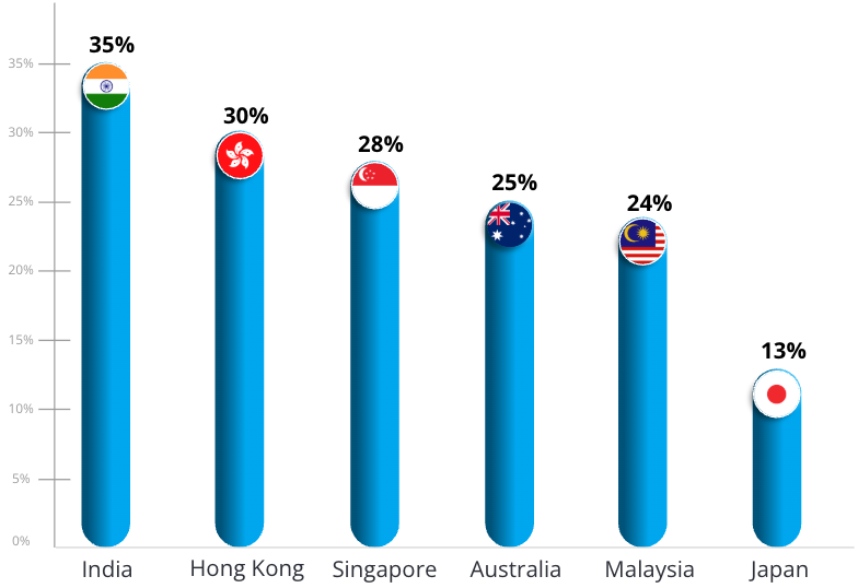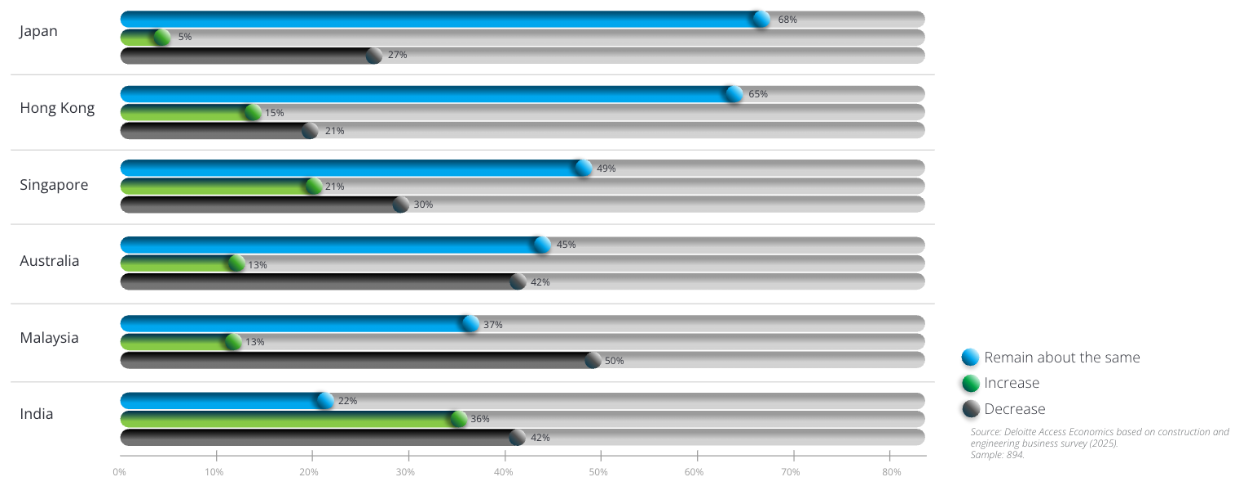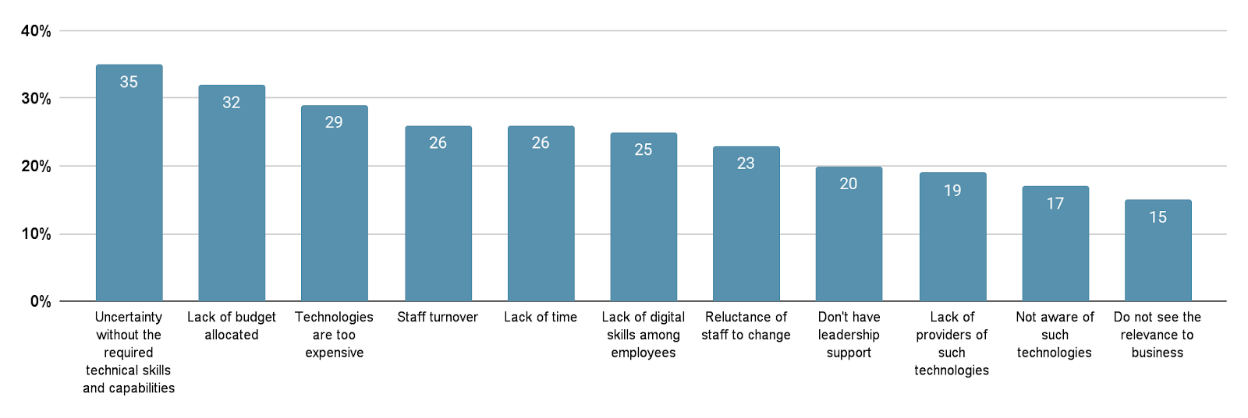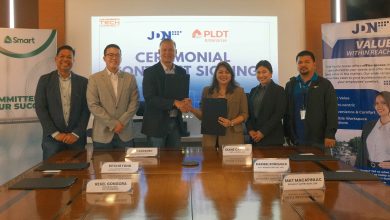Autodesk: Singapore Construction Investing 28% of Expenditure into Technology
Digital Adoption Accelerating at a Rapid Pace in the Construction Industry

Autodesk, Inc. has announced the Singapore findings from its annual ”State of Digital Adoption in the Construction Industry” report. Jointly conducted with Deloitte, this is the third edition of the annual survey, which explores digital adoption trends in the construction sector. The 2025 report is based on insights from 894 construction businesses from six markets across Asia Pacific (APAC), which include Singapore, Australia, Japan, India, Malaysia, and Hong Kong.
Autodesk’s findings indicate that the pace of digital adoption is accelerating across the construction industry, continuing a trend observed in the past year. Construction firms in APAC are today using an average of 6.2 technologies, a 20% increase from the previous year (5.2). Importantly, the share of businesses viewing technology as integral to their growth strategy continues to increase. Since the first State of Digital Adoption survey in 2023, the share of businesses identifying “new technology assisting project work” as a source of growth has increased from 38% to 47% and the share using new technologies to ‘improve internal processes’ has increased from 37% to 44%.
Businesses with higher rates of digital adoption are reporting better project outcomes, stronger financial performance, and at a time when worker safety is quickly coming under the spotlight, a reduced number of safety incidents. Findings suggest that firms with higher levels of digital maturity stand to reap an average of 1.5% more projects delivered under budget and 1.1% more projects completed on time. For an average business with SGD $100 million in revenue, this would also lead to SGD $1.14 million more in revenue growth and a 50% reduction in the likelihood of safety incidents, justifying investment made into technology.
Setting the standard: Autodesk Finds Singapore as a Regional Leader in Digital Tool Adoption
Singapore’s construction firms are using an average of 7.3 technologies today. This places Singapore second in the region (after India, which used an average of 8.6 technologies) in terms of number of technologies adopted, and a considerable distance ahead of the regional average (6.2). More significantly, this represents a substantial uptick of nearly half (46%) the number of technologies used just a year ago (5.0).

Reaffirming the importance that industry players are placing on digitalisation, 28 cents of every dollar within the Singapore construction sector is being invested into new technology. This represents a considerable rise of 30% from the previous year, where industry players invested 21% of their expenditure into technology.

The continued focus on digitalisation among Singapore construction firms is likely to have been driven by government-led digital transformation programs over the past few years. This includes industry specific initiatives like the Building and Construction Authority’s (BCA) Built Environment Industry Transformation Map, which has prioritised the adoption of common data standards and digital tools such as BIM as a requisite for construction contracts. The BCA is also encouraging the implementation of Integrated Digital Delivery (IDD) into construction projects, which can contribute to reduced waste and rework, improved site safety, and optimised costs.
Singapore’s local construction industry is poised for further growth. According to the BCA, the value of construction contracts to be awarded in 2025 stands at approximately SGD $47 billion to SGD $53 billion. Data from SingStat also indicates that the total industry revenue is expected to increase from approximately SGD $31 billion to SGD $38 billion over the next three years.
“A challenging business environment, coupled with the increasing digital proficiency of competitors, escalating operational costs, and government-mandated technology adoption, necessitates immediate and decisive action,” said Jeff Larrick, Senior Director of APJ Construction Cloud at Autodesk. “It is highly encouraging to see construction businesses in Singapore continue accelerating their investment into technology over the last few years, positioning them well to capitalize on opportunities arising from the slew of major local infrastructure projects on the horizon. This commitment reaffirms the effectiveness of digital tools in the construction space, and is precisely what the industry needs to pave the way for a future of digital-led growth.”
Laying the Digital Foundation: Autodesk Finds That Innovation Powering Singapore’s Construction Evolution
Findings suggest that there is potential for digital maturity in the industry to grow further. Construction and engineering businesses are signaling their intent to develop their digital maturities in the future with 26% of budgets being allocated to new technologies and R&D. This is an increase of more than 40% from the previous year (18%).
With the potential of construction technologies to improve project outcomes and financial performance, Singapore industry players could also be looking to digital tools as a means to navigate a volatile economic environment. The top five challenges faced by Singapore construction firms include economic uncertainty (32%), labour costs (29%), cost of raw materials (32%), regulation and compliance requirements (24%), and growing competition (28%).
Mobile apps (59%) is the most used technology among Singapore construction businesses, followed by construction management software (58%), building information modelling (57%), and Internet of Things (IoT) and smart sensors (57%). Moving ahead, many businesses are also planning to increase deployments of IoT and smart sensors (39%), adopt more construction management software (39%), and more mobile apps (38%).
Safety first: Transforming Risk Management in Construction with Technology
The construction industry has one the highest rates of safety incidents of all industries globally. The situation is no different in Singapore, with construction consistently ranked among the highest risk sectors in the city-state.
Providing a real-world example, the Singapore Ministry of Manpower (MOM) conducted a safety inspection earlier this year at more than 300 construction sites across the country, where more than 800 safety violations were identified. MOM data also revealed that the construction sector was responsible for 20 fatalities out of a total of 36 workplace deaths in Singapore.
Setting the right foundation for greater digital adoption is crucial for the industry to improve safety and quality. Businesses with greater digital maturity were more likely to experience a decrease in safety incidents. In APAC, 41% of businesses using six or more technologies observed a decrease in safety incidents, compared to only 27% of businesses using less than six technologies.
79% of Singapore construction firms reported either a decrease or no change in safety incidents, below the regional average of 82%. While this suggests room for improvement, this number has the potential to increase as technology adoption continues to accelerate.

Figure 3. Share of businesses reporting a change in safety incidents
Unlocking the Tech Promise: Addressing Hurdles to Widespread Adoption
Despite the proven benefits that digital tools can deliver, barriers remain for further technology adoption. According to Autodesk, ncertainty around the required technical skills and capabilities (35%) was the most common barrier to integrating technologies for Singaporean businesses, followed by the lack of budget (32%) and cost of technologies (29%).

Despite this uncertainty, Singapore has made significant progress in increasing digital skills among employees, with just 25% of Singaporean businesses surveyed identifying skills gaps as a barrier in 2025, relative to 55% in 2023. They are also proactively looking to develop skills in the workforce with 84% of businesses seeking to upskill their workers. Additionally, more than three quarters of businesses also collaborate with educational providers to improve skill development.
The Singapore government also has a number of initiatives in place that local firms can leverage to alleviate costs of technology adoption. Examples include the Productivity Solutions Grant, and the new SGD $150 million Enterprise Compute Initiative that was announced in Budget 2025 specifically to accelerate the adoption of AI solutions within local enterprises.
“Firms also need to recognise that investment in technology alone is insufficient,” added Larrick. “Unlocking the full potential of digital transformation requires a strategic focus on effective change management. Key activities, such as clearly communicating the benefits of new technologies, piloting solutions prior to widespread deployment, allocating dedicated budget for transition support, and securing active endorsement and usage from business leaders, are crucial. These measures will be pivotal for fostering employee engagement, validating technology impact, and ensuring successful integration into core business operations.”




